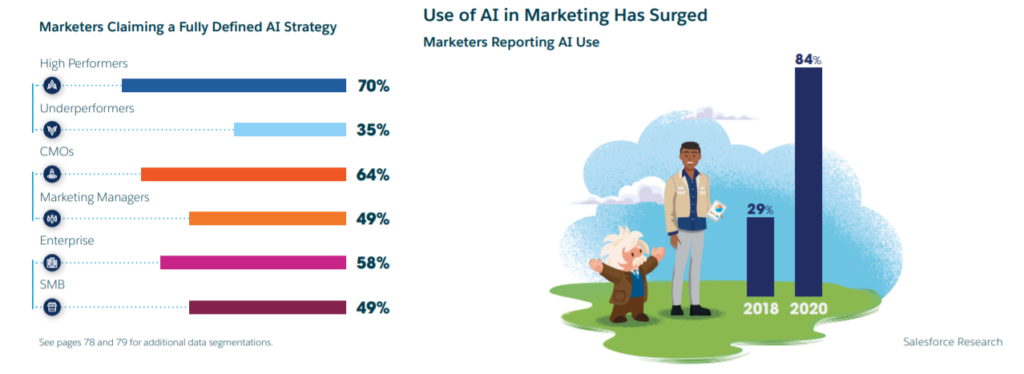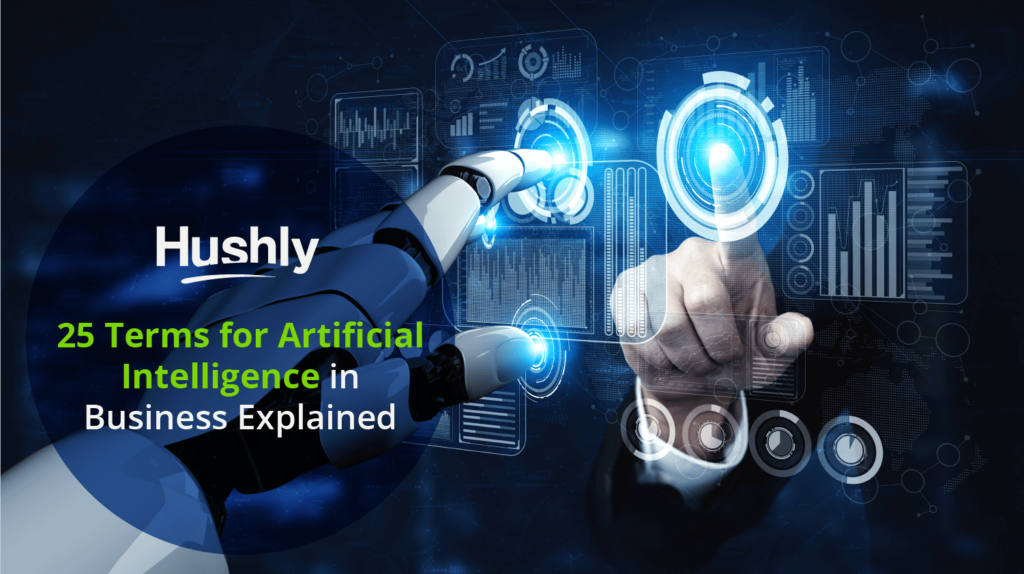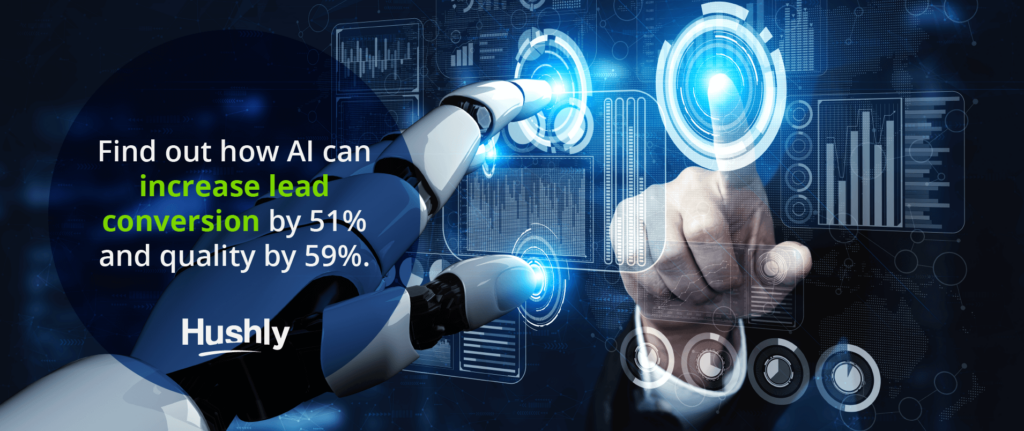Artificial intelligence has swept through the marketing and sales departments across all industries.
According to Salesforce, 84% of marketers report using AI today. Back in 2018, less than 30% said AI was a part of their marketing strategy.

Despite its growing popularity, many managers and marketers may not be aware of all the terms associated with AI.

25 Artificial Intelligence Terms You Need to Know for B2B
Bookmark this page, so you always have it handy when you need to reference a term.
1. Algorithm
While the coding behind algorithms is complex, the concept is simple. An algorithm is just a set of rules you give to a computer system so that it can complete a specific task.
Algorithms can act independently – like when Netflix recommends its original content by ranking it as “important.” They can also work in layers – like how YouTube or Spotify – use millions of other sessions to recommend the best content for you.
2. Artificial Intelligence
The idea, practice, and study that computer systems can complete tasks with similar or better quality than a human.
3. Artificial Intelligence Engine (AI Engine)
A system of interworking algorithms, neural networks, and machine learning techniques. An AI engine can consume data from first-party interaction or receive data from third-party input.
You interact with an AI engine every time you scroll through Netflix, browse Spotify recommendations, shop on Amazon, or read content in the Hushly resource center.
AI engines include different models like collaborative filtering and session similarity models to create a hyper-personalized and interactive experience for everyone.
4. Artificial Neural Network
A system of algorithms and artificial intelligence that mimics the same pathways in the human brain to learn, adapt, and carry out tasks.
5. Automation
The act of unloading tasks once completed by humans onto artificial intelligence – such as email marketing and lead scoring.
6. Backpropagation
Backpropagation is short for “backward propagation of errors” and is a type of algorithm. Backpropagation trains neural networks until the initial result (output) is as close to the desired result (output) as possible.
7. Chatbots
A text messaging system that is powered by artificial intelligence and human input. The human sends messages on one side. The artificial intelligence responds on the other side. Some chatbots are extremely advanced and include machine learning features to adapt based on new information (see point 14).
Chatbots are not to be confused with live chat, which involves two real humans communicating.
8. Classification
Using an algorithm to set up categories and place data entries within specific categories.
9. Clustering
Using an algorithm to identify patterns – often undetectable to humans – to group pieces of data into larger sets.
10. Collaborative Filtering Model
A type of supervised machine learning where an algorithm compares a current session’s behavior to previous sessions to offer personalized content recommendations.
This is like Spotify’s “people who listened to XYZ also liked ABC.”
11. Content Similarity Model
A type of unsupervised machine learning that uses natural language processing to group content assets and make recommendations based on a single session’s behavior.
12. Data Mining
Digging through massive data sets to find patterns, groupings, or recurrences. Both humans and machines can mine data. However, AI can often find patterns much faster and efficiently than humans.
13. Deep Learning
A type of machine learning where multiple neural networks study massive data sets and make conclusions – similar to how the human brain works.
14. Digital Ecosystem
Your martech stack or combination of tools you use to implement AI, CRM, email, and associated technologies.
15. Machine Learning
A type of artificial intelligence where algorithms can improve themselves based on access to new data or regular input.
16. Natural Language Processing
A subset of artificial intelligence where algorithms are trained to consume, interpret, manipulate, and analyze characteristics specific to how humans communicate with each other.
Google’s BERT update focused on improving its natural language processing, and Google called it the most important update in years.
17. Reactive Machines
Algorithms and AI tools that immediately analyze, predict, and react to situations in real-time. Reactive machines do not store data.
18. Recurrent Neural Networks
A vast neural network that uses their internal memory to make decisions. Recurrent neural networks can recognize patterns and sequences while consistently improving themselves.
19. Reinforcement Learning
Maybe you’ve heard of positive or negative reinforcement in the context of raising kids. AI can learn using reinforcement too. The algorithm interacts with its environment and receives either rewards or punishments depending on how it responds.
20. Session-Based Similarity Model
A type of deep learning that looks for patterns across each visitor’s entire session history by following the path they took. The algorithm then looks for similar patterns in future visitors to recommend relevant pieces of content.
21. Structured Data
A concrete set of data that you can easily understand, analyze, and search. These are your Excel sheets full of data.
22. Supervised Learning
This type of machine learning mimics a student and teacher relationship. The AI system is taught to produce a desired outcome using provided data sets.
23. Turing Test
The infamous test that was conceived by Alan Turing to judge how an algorithm or artificial intelligence system compares to the human mind. If the algorithm can convince a human that they’re communicating with another human, the algorithm is said to pass the Turing Test.
24. Unstructured Data
Data you can’t put a concrete set of numbers to – such as podcasts, audio files, videos, infographics, and image content.
25. Unsupervised Learning
Feeding unlabeled and unclassified information to an algorithm so it can learn and train itself without help. Where supervised learning is like a teacher-student relationship, unsupervised learning is more like a self-study environment or open-book test.
Harness the Power of AI for Your B2B Website
Hushly’s AI engine brings the same personalization as top companies like Amazon to your B2B website. Best of all, you don’t need any serious AI or coding knowledge. The plug-and-play platform and price-per-lead cost make it easy for anyone to take advantage of AI-driven personalization.
Find out how AI can increase lead conversion by 51% and quality by 59%.




